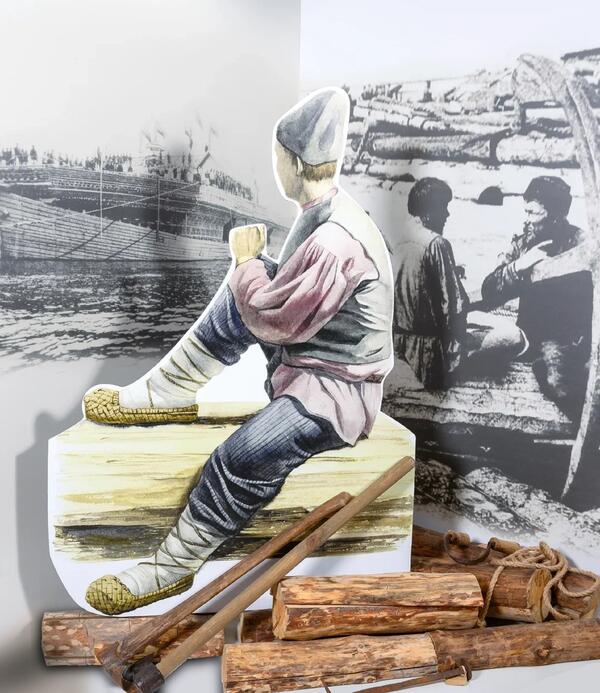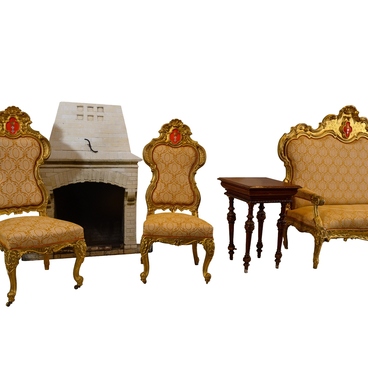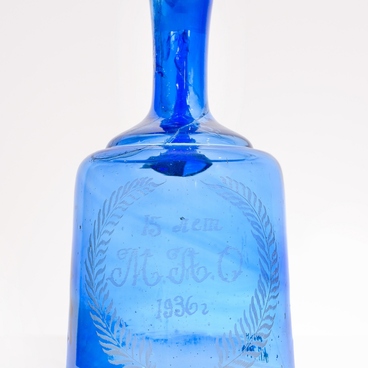Since the mid-19th century, a wood fair was held every year in the city of Kozmodemyansk. The main buyers and sellers on it were merchants from large Volga cities: Tsaritsyn (modern Volgograd), Astrakhan, Kazan, Simbirsk (modern Ulyanovsk), Samara, Saratov. Part of the pinewood was sold to the Moscow and Ryazan provinces. Residents rarely participated in the fair.
This fair was considered the second in Russia in terms of wood turnover, the first one being the wood fair in Arkhangelsk. The number of its participants varied from 30,000 to 50,000 people. As a comparison, the population of Kozmodemyansk itself was only about 5,000 citizens. The fair money turnover was from five to six million rubles each year.
The fair usually opened at the end of May and lasted from four to seven weeks. The dates could change depending on the water level in the rivers: most of the goods were delivered to Kozmodemyansk by water.
Until 1893, the fair worked off the books, then a state permit was issued for it. By 1909, the number of sellers and buyers had grown so much that the working time was increased to two months.
About 80% of all the wood that was sold in Kozmodemyansk in the 1900s was made up of spruce and fir logs. Most of them were harvested in the Kostroma, Nizhny Novgorod, and Vologda provinces. Then the logs were floated to the fair along the Vetluga River and its tributaries. This method of transportation was the cheapest one. For example, delivery from Saratov to Kozmodemyansk cost only 20 kopecks per log.
The tree trunks were tied into rafts, which were then controlled by a whole team of rafters. At the fair, such a raft was considered a separate unit of goods: there were about 600 logs of different lengths and widths in it. Every year, rafters brought more than 2,000 rafts to the fair, which stretched along the river for 6 to 7 versts — that is, from 6 to 7.5 kilometers.
In addition to logs, Kozmodemyansk sold wooden slats, beams, poles, and even telegraph poles. One of the most popular options was a wooden dunnage rack: on river vessels, they were placed under loads so that they would not get wet during the journey.
This fair was considered the second in Russia in terms of wood turnover, the first one being the wood fair in Arkhangelsk. The number of its participants varied from 30,000 to 50,000 people. As a comparison, the population of Kozmodemyansk itself was only about 5,000 citizens. The fair money turnover was from five to six million rubles each year.
The fair usually opened at the end of May and lasted from four to seven weeks. The dates could change depending on the water level in the rivers: most of the goods were delivered to Kozmodemyansk by water.
Until 1893, the fair worked off the books, then a state permit was issued for it. By 1909, the number of sellers and buyers had grown so much that the working time was increased to two months.
About 80% of all the wood that was sold in Kozmodemyansk in the 1900s was made up of spruce and fir logs. Most of them were harvested in the Kostroma, Nizhny Novgorod, and Vologda provinces. Then the logs were floated to the fair along the Vetluga River and its tributaries. This method of transportation was the cheapest one. For example, delivery from Saratov to Kozmodemyansk cost only 20 kopecks per log.
The tree trunks were tied into rafts, which were then controlled by a whole team of rafters. At the fair, such a raft was considered a separate unit of goods: there were about 600 logs of different lengths and widths in it. Every year, rafters brought more than 2,000 rafts to the fair, which stretched along the river for 6 to 7 versts — that is, from 6 to 7.5 kilometers.
In addition to logs, Kozmodemyansk sold wooden slats, beams, poles, and even telegraph poles. One of the most popular options was a wooden dunnage rack: on river vessels, they were placed under loads so that they would not get wet during the journey.



